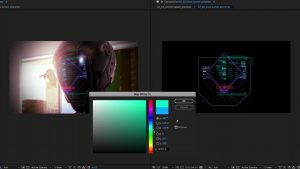If you’re no stranger to the filmmaking world, I’m sure you’re familiar with both a Steadicam and a gimbal. Both are devices that allow filmmakers to capture stable footage while moving without the need for a slider, dolly, or a crane. However, the way both tools operate is vastly different, even though the results can be similar.
A gimbal operates using motorized mechanics and advanced algorithms to stabilize the camera. It consists of three motorized axes (pan, tilt, and roll) that work together to counteract any unwanted camera movements. By detecting motion and making real-time adjustments, the gimbal keeps the camera level and steady, even when the operator moves or the camera is subjected to external forces.
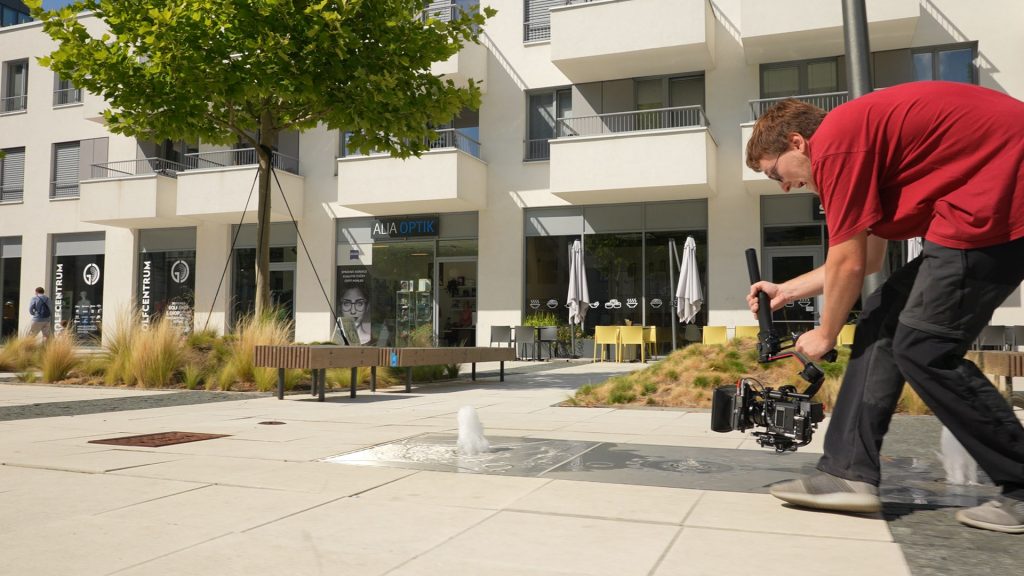
On the other hand, a Steadicam achieves stability through conventional balancing principles. It consists of a harness worn by the operator, connected to an articulated arm holding the camera. The system works on the concept of inertia and counterbalance. The operator’s body movements are isolated from the camera’s movement by the Steadicam’s design, allowing for smooth and stable shots.
Typically, gimbals are used for lower-budget and smaller cameras, whereas Steadicams are used for larger cinema cameras with hefty cinema lenses due to their increased weight capacity. Even if you were to obtain a Steadicam, if you were to use it with a mirrorless camera, the effects may be negligible due to the light load. (However, you will typically get better results with a Steadicam.)
So here’s a what-if: what if we could merge the concept of inertia and counterbalance with the Steadicam’s vest and arm with the motorized mechanics and advanced algorithms of a gimbal . . . ? Would it give us better results when using a camera like the Canon R5, a small mirrorless camera, or is it simply equipment overkill?
Well, we’ll have you know that Steadicam, the Tiffen brand, makes an arm attachment that allows you to attach the Steadicam arm to a gimbal.
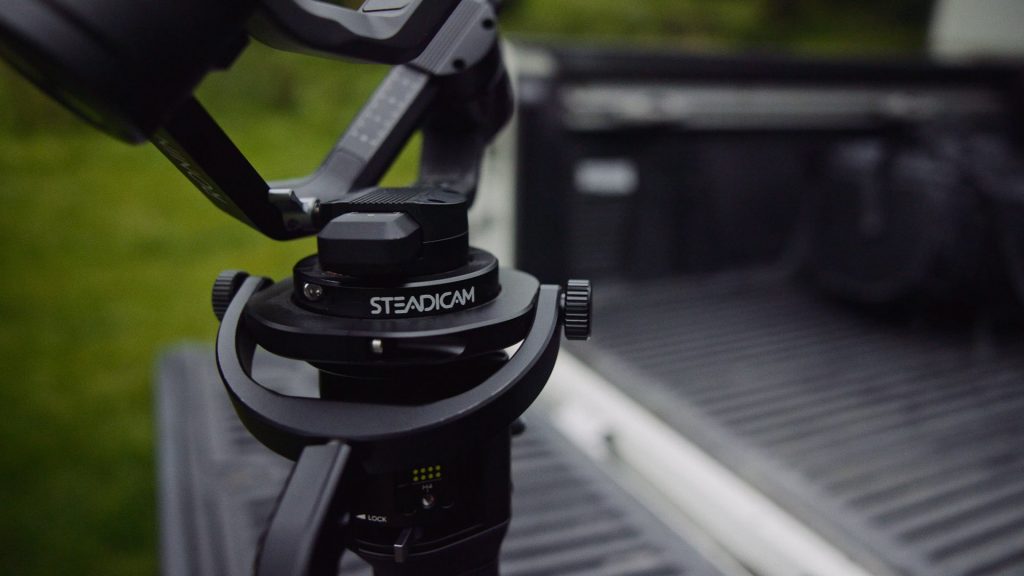
Today, we will run through four tests to see if merging these two devices is as powerful as the Ninja Megazord. (That is a millennial reference.) Please note, that while that given the tests require motion to demonstrate, watching the video is a must.
The Tests
Test 1: The Static Shot
We kicked things off with a seemingly straightforward static shot, using the Steadicam and the gimbal. Now, I know what you’re thinking: Why bother with a static shot when we’re talking about stabilization equipment?

Well, it’s all about laying a foundation for our comparisons. Interestingly, even in this setting, we noticed some stark differences. The Steadicam held its own, staying completely motionless. The gimbal, on the other hand, has a slight, almost imperceptible wobble. It might not even be noticeable to the untrained eye, but hey, we’re here to nitpick.
Test 2: The Even Surface Stroll
We decided to hit flat grass for our second test, walking leisurely on an even surface. The Steadicam and gimbal combo, in its glory, provided silky-smooth footage, making it appear almost as if we had set out a dolly and jib.

Meanwhile, our trusty gimbal performed admirably, but here’s where things get a tad interesting. As our subject approached the camera in shot B, the up-and-down bobbing of the operating became increasingly evident. Once gain, to the untrained eye, I don’t think this would even be noticeable. But as a cinephile? There’s a noticeabledifference with the type of motion at hand.
Test 3: Rough Terrain Sideways Shuffle
We decided to get adventurous for our third outing, moving sideways on some rugged terrain. The Steadicam and gimbal combo, once again, impressed us with its finesse, delivering footage so smooth you’d again think we had set out a dolly in the Welsh countryside.
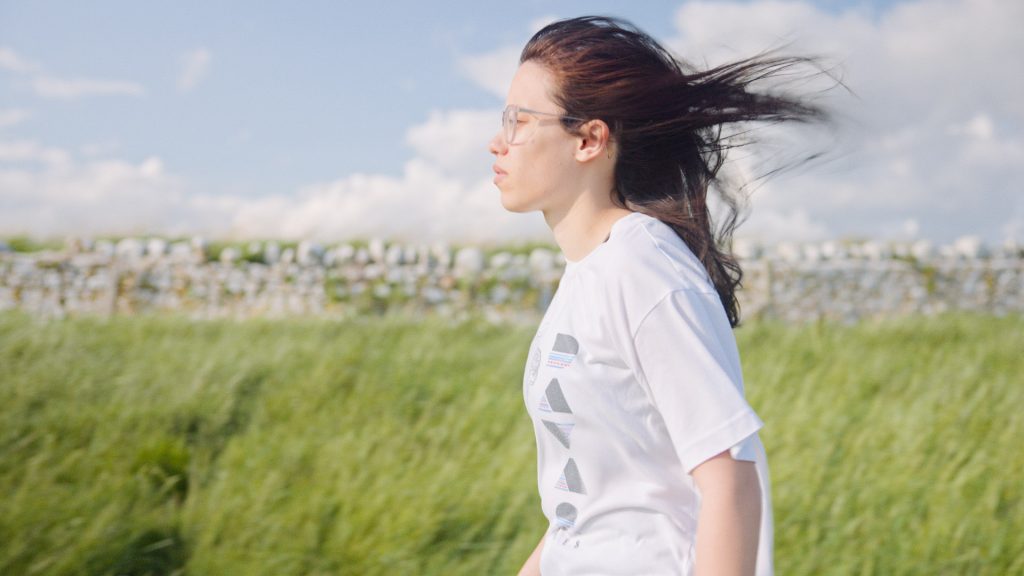
The gimbal? It held up pretty well, but here’s where things got pixel-peeping intense. Upon closer inspection, a discernible judder was visible in the background. It wasn’t overly distracting, but it was a tell-tale sign of the terrain’s roughness for the sharp-eyed viewer.
Test 4: The Concrete Step Climb
Lastly, we decided to ramp things up (literally) by briskly walking up a set of concrete steps. The Steadicam, paired with the gimbal, moved with a completely immersive fluidity, making every step feel like a cinematic journey. There wasn’t a single shudder with the motion.
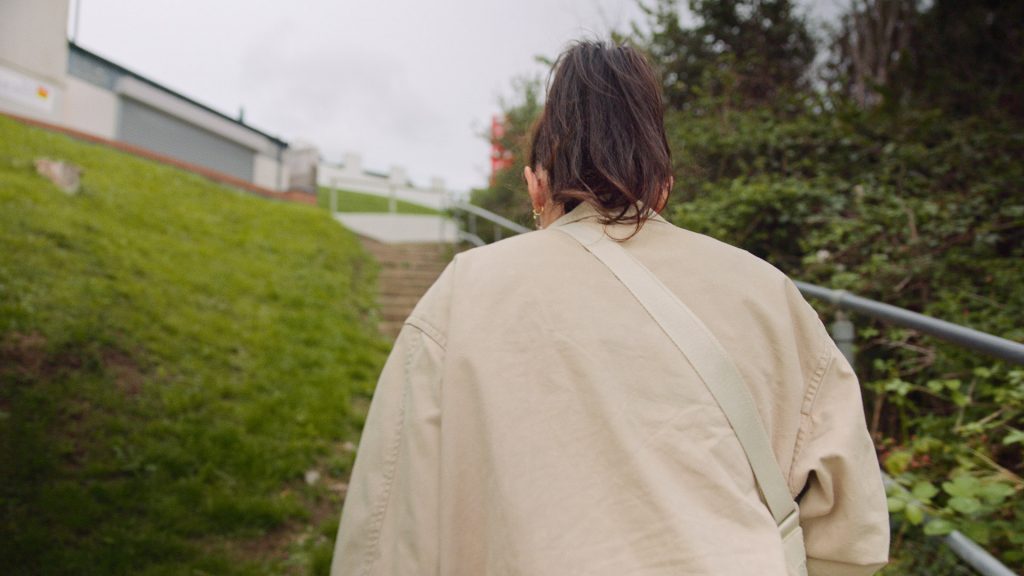
The gimbal, while mostly holding its ground, did exhibit minimal judder. It wasn’t enough to break the immersion but enough to remind us of its mechanical nature.
Conclusion
In most scenarios, the variance between the shots is minor, and I’d wager the average viewer wouldn’t spot it. Yet, there’s a difference. It’s the smallest elements in filmmaking that accumulate to create a scene that feels truly “cinematic.” As Al Pacino‘s character in Any Given Sunday points out, “Life is a game of inches,” and that sentiment resonates with filmmaking for me. It’s not just one big lens or one VFX plug-in that crafts your desired aesthetic; it’s an ensemble of the small things. The enhanced stabilization from merging a gimbal and Steadicam genuinely elevates motion shots.
And, hey, let’s not overlook a crucial aspect: while gimbals have shrunk over the past decade, they can still be quite hefty, especially when paired with a professional lens. Over time, you’ll likely experience backaches and arm fatigue. The Steadicam vest and arm do wonders to alleviate this strain.
However, as demonstrated in the video, using the Steadicam vest and arm as a solo operator presents its own challenges, especially during setup. It can also be cumbersome to transport without a dedicated case. Additionally, the setup may feel restrictive, almost like having an exoskeleton attached (not literally, but you catch my drift).
In conclusion, where do we stand? Well, I have to be honest with you all. Earlier this year, I sold the Aero Sled, which is the counterpart for the Steadicam vest and arm designed to hold and stabilize heavier cinema cameras. I had planned on parting ways with the vest and arm as well, but this tutorial has convinced me to keep them in my gear arsenal. Being able to attach the gimbal to the Steadicam does really smooth out the typical bounce that can be associated with gimbal movement.
Looking for filmmaking tips and tricks? Check out our YouTube channel for tutorials like this . . .

